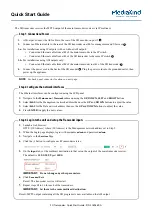
TECHNISONIC INDUSTRIES LIMITED
www.til.ca
TBS-150, 250, 350 Installation & Operating Instructions
TiL 92RE122 Rev L
1-1
SECTION 1 - GENERAL DESCRIPTION
1.1 INTRODUCTION
Sections 1 and 2 of this publication provide general information on Technisonic VHF/AM
Base Station Systems, Item No.'s TBS-150, TBS-250 and TBS-350. Specific information for
the Base Station Model indicated on the front cover can be found in Section 3.
All Base Station Systems consist of a simplex transceiver complete with microphone,
operating over the frequency range of 117.975 MHz to 138.000 MHz. The Base Station
Systems are intended for operation in an aeronautical environment and can operate from AC
power or external DC power in local and remote operating modes.
1.2 DESCRIPTION
The three base station configurations utilize the keypad entry transceiver (TiL 91-DE)
configured for Low Power, 15 Watt or 25 Watt operation. All systems are configured for
use of optional Line Interface/Control boards for remote operation. Each base station
consists of a Transceiver, Power Supply Module, RF Amplifier Module, Microphone and
Control Board (optional). Refer to Table 1.1 for system configuration details.
To improve the rejection of interfering signals, dual conversion receiver technology has been
incorporated on the Transmitter/Receiver (Module A1) board used in Technisonic VHF/AM
base stations. The second IF is 455 kHz using a ceramic filter, which is immune to high
energy ringing. The dual conversion module also has a second local oscillator, second mixer
and ceramic filter. The first local oscillator is the original VCO.
The dual conversion receiver board, P/N 003494-1 was implemented into TBS and TSC
series base stations starting in January 2001. An option label on the chassis will indicate
OPTION 94 if the dual conversion board is installed. It is possible to retro-fit the dual
conversion receiver/transmitter board into older TSC/TBS series base station employing the
single conversion board. Please contact Technisonic for availability of an exchange board.
Note:
If a new A1 Module has been retrofitted the squelch circuit must be aligned for the
receiver squelch to operate correctly.
The dual conversion receiver’s squelch knob must be rotated significantly more clockwise (4
o’clock position) to obtain the same squelch setting (3uV) as a single conversion receiver’s
squelch knob set to the 12 o’clock (straight up) position.
If the dual conversion receiver’s squelch knob is set to the 12 o’clock position, signals with
a level greater than 0.5uV will open the squelch. At most airports this will not be an
adequate level of squelch. Please be aware of this squelch knob adjustment variance when
setting and/or comparing squelch levels of dual conversion vs. single conversion base
stations.












































